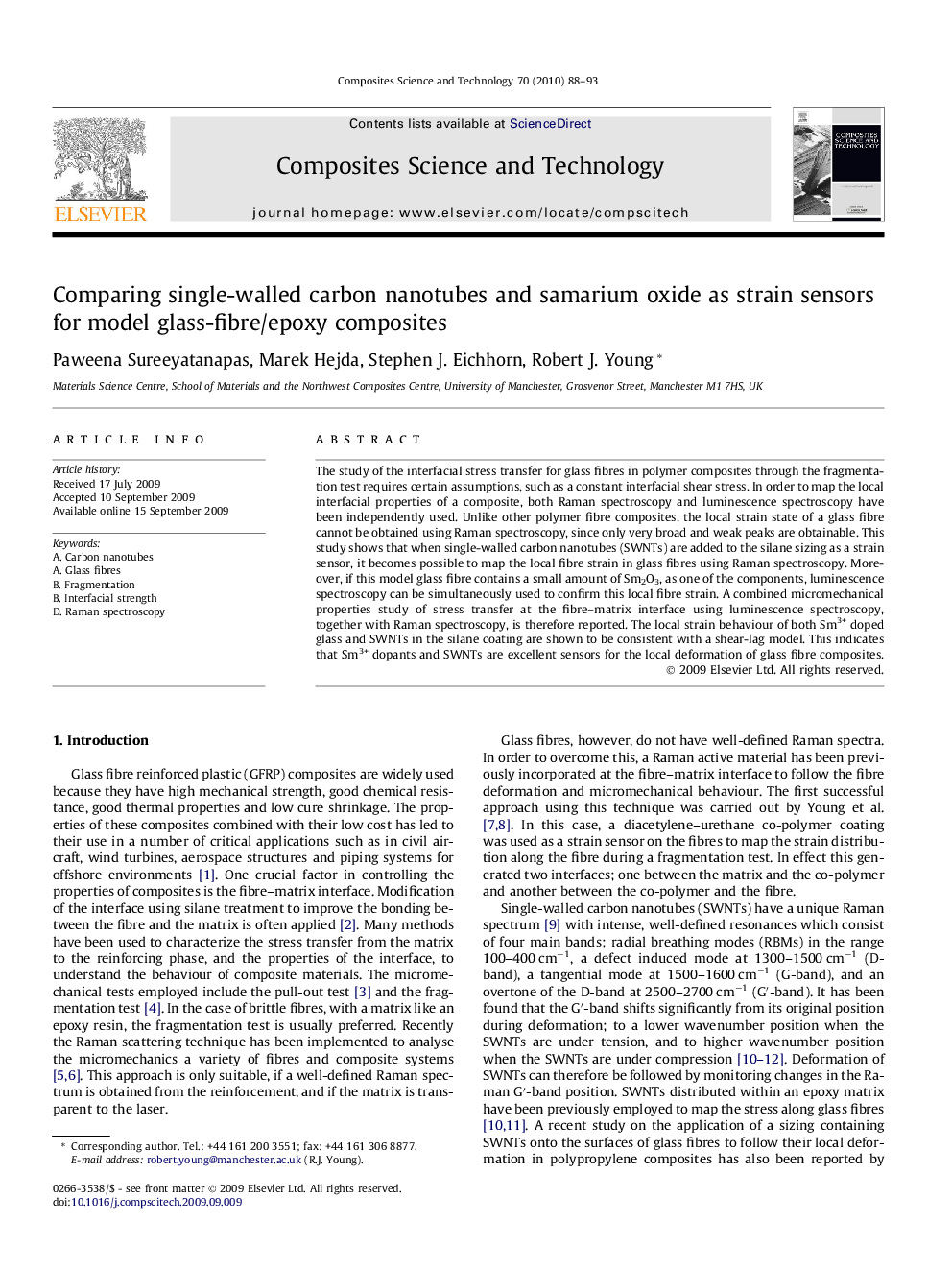| کد مقاله | کد نشریه | سال انتشار | مقاله انگلیسی | نسخه تمام متن |
|---|---|---|---|---|
| 821303 | 906753 | 2010 | 6 صفحه PDF | دانلود رایگان |

The study of the interfacial stress transfer for glass fibres in polymer composites through the fragmentation test requires certain assumptions, such as a constant interfacial shear stress. In order to map the local interfacial properties of a composite, both Raman spectroscopy and luminescence spectroscopy have been independently used. Unlike other polymer fibre composites, the local strain state of a glass fibre cannot be obtained using Raman spectroscopy, since only very broad and weak peaks are obtainable. This study shows that when single-walled carbon nanotubes (SWNTs) are added to the silane sizing as a strain sensor, it becomes possible to map the local fibre strain in glass fibres using Raman spectroscopy. Moreover, if this model glass fibre contains a small amount of Sm2O3, as one of the components, luminescence spectroscopy can be simultaneously used to confirm this local fibre strain. A combined micromechanical properties study of stress transfer at the fibre–matrix interface using luminescence spectroscopy, together with Raman spectroscopy, is therefore reported. The local strain behaviour of both Sm3+ doped glass and SWNTs in the silane coating are shown to be consistent with a shear-lag model. This indicates that Sm3+ dopants and SWNTs are excellent sensors for the local deformation of glass fibre composites.
Journal: Composites Science and Technology - Volume 70, Issue 1, January 2010, Pages 88–93